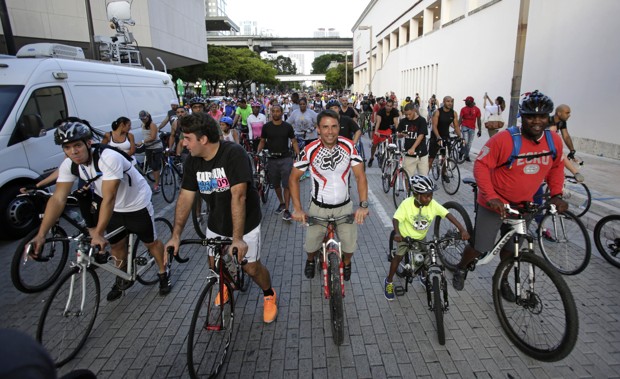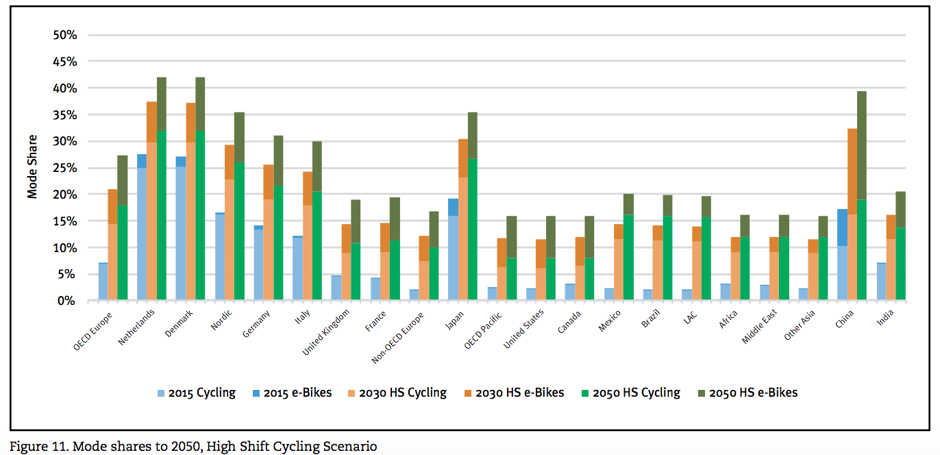A new report calculates how much the world would benefit—especially the environment—from a global shift to more riding.

About 1 percent of all urban trips are made by bike in the U.S. It’s a tiny share, especially when compared to stand-out cycling countries such as the Netherlands, Denmark, China, and Japan, or even the global rate, which is 6 percent.
Still, American cyclists are growing in number. What would the social impact be if that growth expanded dramatically—both in the U.S. and around the world?
Pretty significant, according to a joint report by UC Davis and the Institute for Transportation and Development Policy. The world might be able to save $24 trillion over driving expenses, and trim CO2 emissions by nearly 11 percent, compared to a scenario where transit trends continued as usual.
From our partners:
To reach those numbers, bikes and e-bikes would have to account for 14 percent of urban miles traveled by 2050, as the report’s “High-Shift Model” shows. In the U.S., this would mean bumping up to a 7 percent trip share, which roughly matches the average share of the top five American cycling cities: Davis, Boulder, Eugene, Berkeley, and Cambridge.
That would indeed be a dramatic shift, but not a totally radical one. The idea is that cities could help meet national targets through a mix of safety and transit policy initiatives and major infrastructure build-outs. The report focuses on urban areas, where higher density helps planners create realistic mobility alternatives to cars.

Even if the numbers are overly ambitious—the immense cost-savings estimate seems particularly improbable—the report’s basic facts are still worth considering. Not every city is destined to be Amsterdam, but more than half of all urban trips worldwide (at least in countries and cities where data is available) are less than 10 kilometers, or a little over six miles, meaning they’re within reasonable cycling range.
[infobox title=’The authors write:’]Even in the United States more than 35 percent of trips are less than 5 kilometers, a distance typically covered in twenty minutes or less [by bike]. A number of such trips should be “cyclable” for many, or at least amenable to travel via e-bikes.
Obviously, what makes a route “cyclable” is not only about distance. It’s also about street design, bike lanes, and an individual’s sense of safety and comfort level with riding. Still, the report is a useful reminder that when it comes to encouraging cycling, the U.S. isn’t really starting from scratch. Many cities have the density to support much better infrastructure than they do. As many reports have shown before, if you build the lanes, the cyclists will come.
This feature originally appeared in CityLab.
















